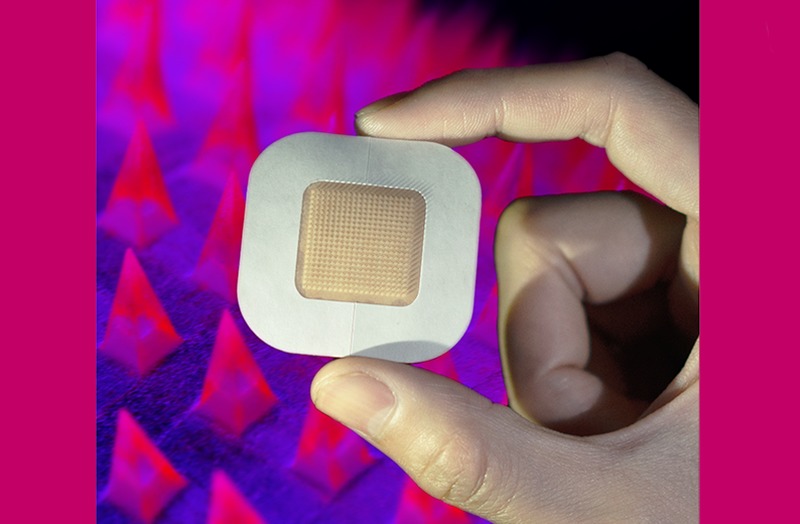With the rise in diabetes cases worldwide, researchers have been finding novel ways to manage this dreaded disease. Now, a team of researchers from UCLA, UNC School of Medicine and MIT have developed a smart insulin-delivery patch that could one day monitor and manage glucose levels in people with diabetes and deliver the necessary insulin dosage. The adhesive patch, about the size of a quarter, is simple to manufacture and intended for once-a-day use, reports UNC Healthcare.
Led by Zhen Gu, PhD, professor of bioengineering at the UCLA Samueli School of Engineering, the study was conducted on mice and pigs. The results have been published in the journal Nature Biomedical Engineering. The researchers are now applying for FDA approval of clinical trials in humans.
Read more Abbott and Novo Nordisk Partner Up to Link Diabetes Devices
“Our main goal is to enhance health and improve the quality of life for people who have diabetes,” said Gu, a former professor in the UNC/NCSU Joint Department of Biomedical Engineering. “This smart patch takes away the need to constantly check one’s blood sugar and then inject insulin if and when it’s needed. It mimics the regulatory function of the pancreas but in a way that’s easy to use.”
Over decades, the treatment for diabetes hasn’t changed much in most of the world. People with diabetes draw their blood using a device that measures glucose levels. They then self-administer insulin with a syringe, a pen-like device, or an insulin pump. A smart insulin patch would sense the need for insulin and deliver it accordingly, the UNC reports said.

The microneedles used in the patch are made with a glucose-sensing polymer that’s encapsulated with insulin. Once applied on the skin, the microneedles penetrate under the skin and can sense blood sugar levels. If glucose levels go up, the polymer is triggered to release the insulin. Each microneedle is smaller than a regular needle used to draw blood and do not reach as deeply, so the patch is less painful than a pin prick. Each microneedle penetrates about a half millimeter below the skin, which is sufficient to deliver insulin into the body.
“It has always been a dream to achieve insulin-delivery in a smart and convenient manner,” said study co-author John Buse, MD, PhD, director of the UNC Diabetes Center and the North Carolina Translational and Clinical Sciences (NC TraCS) Institute at the University of North Carolina at Chapel Hill School of Medicine. “This smart insulin patch, if proven safe and effective in human trials, would revolutionize the patient experience of diabetes care.”
In the experiments, one quarter-sized patch successfully controlled glucose levels in pigs with type I diabetes for about 20 hours. The pigs weighed about 55 pounds on average.
The technology has been accepted into the U.S. Food and Drug Administration’s Emerging Technology Program, which provides assistance to companies during the regulatory process. The researchers are applying for FDA approval for human clinical trials, which they anticipate could start within a few years.












